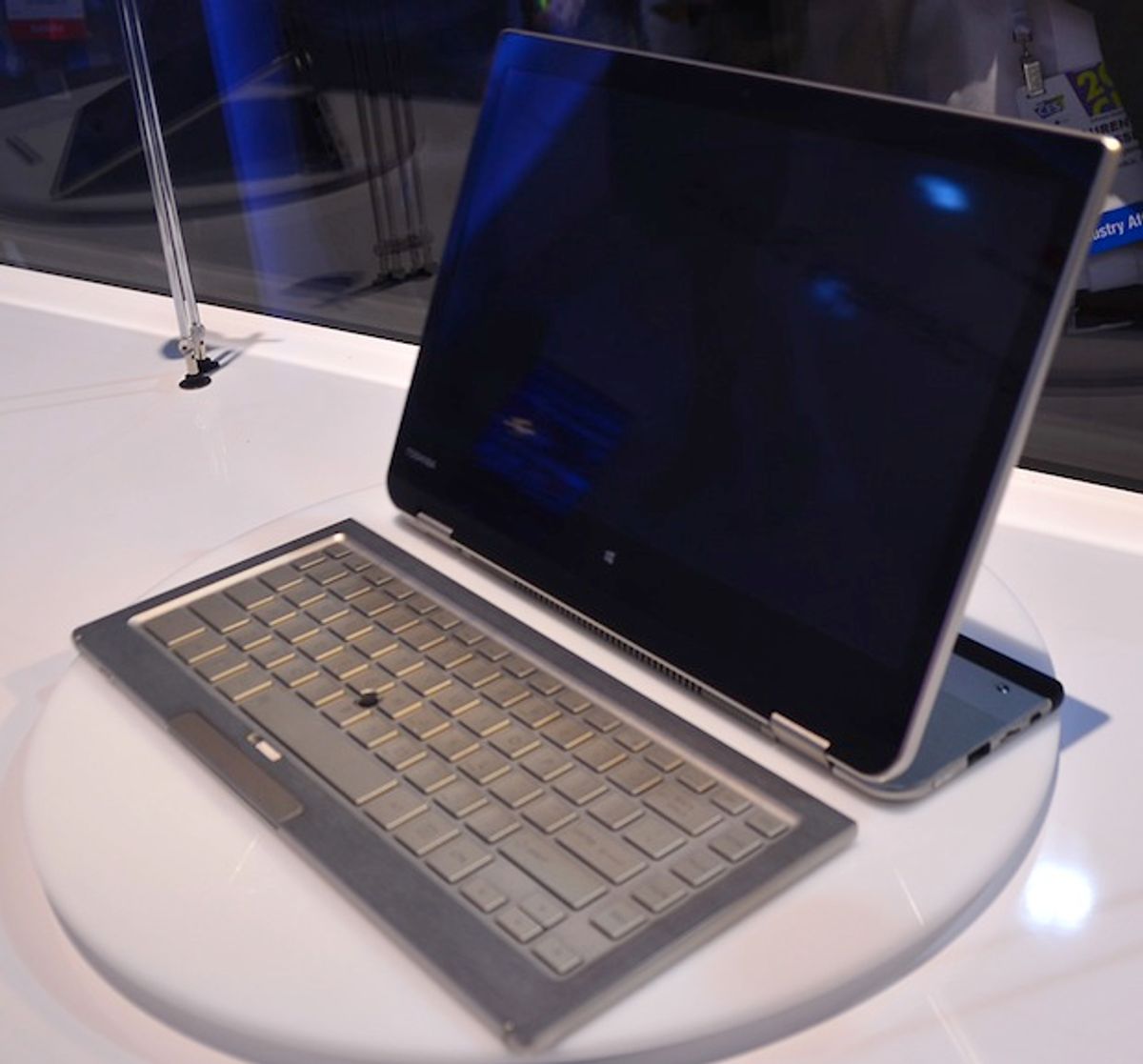One of the highlights for us at CES is checking out concept products that will probably never see the light of day because they're just too crazy to give to consumers. You can think of them like pieces of designer clothing at a runway show: nobody actually wears that stuff, but it has the potential to influence the direction in which designs might be heading.
A trend that we noticed with concept products at CES this year was modularity: the idea that you shouldn't have to settle for a mobile device (like a cellphone or a tablet or a laptop) that only exists in a single form factor. We use these gadgets in all kinds of ways that they weren't really intended for (like, watching a movie on a cellphone or editing an Excel spreadsheet using a tablet's touchscreen)—wouldn't it be fantastic if we could dynamically reconfigure them to best fit our immediate needs? This is a significant hardware problem, and nobody has quite found the right way to solve it yet, but we saw some CES concepts that suggest a few different approaches that could eventually work.
Here, then are the modular highlights:
Toshiba's Shape-shifting Laptop
In Toshiba's booth, we ran across this "Shape-shifting Concept PC" (that's the best name they could come up with) that can transform into five distinctly different sorts of computers. First, it makes for a halfway decent clamshell laptop:
Flip the keyboard around 270 degrees into a stand, and you've got a digital canvas, or lay the keyboard flat against the back of the screen, and it's a convertible tablet. Don't need the keyboard? It snaps right off, making the device into a dedicated tablet.
Even when detached, the keyboard remains functional (it has its own battery and wireless connection), so you can set the screen up and use it in presentation mode, or as a video player.
It's worth noting that this isn't just a design concept: it's a fully functional prototype. All the folding, snapping parts together, and breaking pieces apart seemed to work perfectly, although nobody could give us detailed technical specs. Toshiba said that while they have no plans to ever produce this exact item, they were showing it at CES to gauge consumer interest, and that the feedback had been very positive. So, there's a chance that somewhere down the line, we might see a cousin of this concept make an appearance in a form that we can actually buy.
ZTE’s Modular Phone Concept
With hardware like this, it would become trivial to upgrade your phone to something faster, something with more memory, something with a better camera, or something with more battery capacity. You can even swap out the screen if you want. The overall concept (ZTE had both a phone and a tablet) is called ECO-MOBIUS, and it's intended to be good for both you (the consumer) and, for whatever its worth, the environment, by minimizing electronic waste.
Nano Magnetics Combines Physical and Data Connections
The final modular concept that caught our eye was in the Eureka Park section of CES, where small companies and startups can show off emerging technology that's not quite ready for the mainstream but really, really wants to be. A company called Nano Magnetics (they make those tiny little magnetic balls that are really bad for you if you swallow them) was demonstrating a system of magnetic connectors designed to be embedded in mobile electronics like cellphones. In addition to enabling devices to stick to each other, the magnets can also transmit data and power in a manner similar to a USB 2.0 connection. This means that you can take several devices, snap them together, and end up with one big foldable and stackable device that can actually act like one big device.
It's a very clever idea, but the big obstacle here is that Nanoport is entirely dependent on electronics manufacturers being willing to integrate the little magnetic bits into their devices.
It's hard to tell which, if any, of these concepts is the most realistic. We love ZTE's idea, and what Nano Magnetics is doing is very clever, but of the three, Toshiba is the only one with a product at the functional prototype stage. Again, our best guess is that none of these technologies will necessarily make it to market in the conceptual forms that we saw them, but we're optimistic that over the next few years, modular computing will go mainstream.
Photos: Evan Ackerman
Evan Ackerman is a senior editor at IEEE Spectrum. Since 2007, he has written over 6,000 articles on robotics and technology. He has a degree in Martian geology and is excellent at playing bagpipes.









